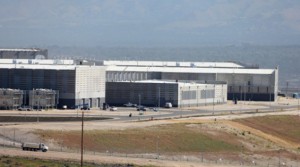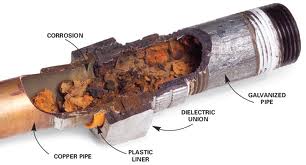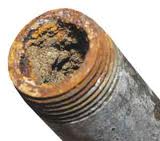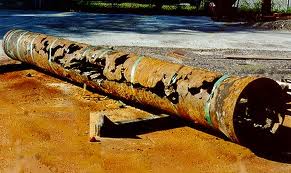Finding the truth about fluoride
By Geoff Cumming

Water News in a Nutshell.
In a Nutshell: Geoff Cumming offers a thoughtful and well-balanced look at the never-ending dispute over the fluoridation of public water. He shows that both sides offer some good arguments and some very dumb ones. Though the battle goes on, the anti-fluoride forces, in New Zealand as elsewhere, seem to be gaining the upper hand.
To see how easily the truth about fluoride can go from pearly white to shades of grey, look no further than the sparkliest weapon in the pro-fluoride arsenal: areas with fluoride in the water supply have lower rates of tooth decay than areas without. Every few years, authorities wheel out new studies clearly demonstrating that fluoridated water helps to produce healthier teeth: drawing not just on foreign academic papers but on the teeth of New Zealanders.
The Ministry of Health’s 2009 oral health survey suggests putting fluoride in the water makes a difference of around 10 per cent in the health of children’s teeth and those gains flow through adulthood.
A 2004 study, which compared non-fluoridated Christchurch with fluoridated Wellington found 5-year-olds in Christchurch had an average of 3.8 “decayed, missing or filled surfaces” compared to an average 2.63 decayed, missing or filled surfaces for 5-year-olds in Wellington. Studies in Auckland, Northland and Southland similarly show incontrovertible benefits of fluoridation. End of story, you might think – and the fluoride debate is a 50-year saga most of us would love to see the back of.
But in the hands of fluoridation opponents, such comparisons assume less and less significance. There are, apparently, 128 tooth surfaces inside the average child’s mouth. So a difference of 1.17 surfaces per child seen in the Christchurch/Wellington study doesn’t cut it, they claim. Then they convert to percentages – and the benefit becomes less than 1 per cent. And that’s just for starters: we should be free to choose and we know not to trust authorities, don’t we?
No wonder the forces of control are losing the battle to drug the water supply with toxic scrapings from industrial chimneys – acids which the “antis” link to lower IQ, brittle bones, thyroid problems, male infertility, cancer and Adolf Hitler. (Go online and grow very afraid, but then check the veracity and depth of the research.)
Establishment experts, using more measured language, will counter that small differences are, in fact, extremely significant on a population basis and the reduction in decay results in big savings in costly and painful treatment. These key messages seem to be getting lost. Throw enough mud and, no matter the substance, some of it sticks.
Dismissed for so long as fringe nutters and conspiracy theorists, anti-fluoride campaigners keep bouncing back and, finally, seem to be winning. First they took Ashburton. In the current (2010-13) local government term, Taumarunui, New Plymouth, Central Hawkes Bay and now Hamilton have fallen – the last three after comprehensive “tribunal” inquiries.
Suddenly, less than half the population lives in areas with fluoride-added water and there’s little impetus in non-fluoridated areas to reverse the tide.
Hastings and Whakatane loom as the next battlefields with referendums in the coming local body elections. Root work, in the form of protests and public meetings, is under way in Auckland and Wellington to put fluoridation on the agenda in next year’s council annual plan processes. Could the silent majority, who’ve accepted the assurances of the medical establishment for so long, now be a minority? Were public health authorities wrong about one of the biggest mass medication programmes in modern times?
What’s beyond challenge is that the anti-fluoride lobby, though small and shoestring-funded, has become well-organised and highly-skilled at challenging the establishment. The internet has helped local campaigners to access international resources, raise funds and run campaigns. Community groups can tap into a national body with links to the US-based Fluoride Action Network. They are no longer isolated but part of an enlightened global movement. For every comprehensive, peer-reviewed study which supports fluoridation, there are many more studies raising doubts about safety and efficacy, no matter how reliable or relevant.
Campaigners have become adept at using local council democratic processes because that’s where decisions on water treatment rest. Annual planning and consultation requirements introduced in the 1990s made it easier for campaigners to bring fluoridation on to the agenda each year. Fluoridation costs – and when councillors are looking to trim rate rises, every drop counts.
Local Government NZ wants the issue taken away from councils and decided at central government level. Hamilton Mayor Julie Hardaker, a lawyer who says she came new to the issue after winning the mayoralty with no council experience, agrees. “Measures to address tooth decay are a public health matter and in this country public health is dealt with by central government. We deal with delivering the water and purifying it to drinking water standards – we don’t deal with medical issues.”
Many councillors support Hardaker’s view that fluoridation raises complex scientific questions which politicians should not have to call. But the Government isn’t about to risk fallout by taking the decision away from communities.
“The Government’s role is to support local councils when they decide to use fluoride – not to make the decision for them, and we are not considering changing that,” Health Minister Tony Ryall told the Weekend Herald. After New Plymouth opted out in 2011, Labour promised to hold an independent inquiry (the last was in 2001) with a view to developing a national policy when next in power but the Greens at the time expressed reservations about “mass medication of water” and support for local decision-making.
Responsibility for defending (and promoting) fluoridation rests with district health boards – and their public health staff generally have more pressing priorities such as rheumatic fever or meningitis outbreaks to attend to. Repelling the antis’ arguments is both time-consuming and thankless.
Where the antis have gained most traction is in tribunal-style hearings, a process adopted by the New Plymouth, Central Hawkes Bay and Hamilton councils to decide whether to retain fluoridation. For councils, this quasi-court process holds the promise of getting a perennial issue off the agenda: a decision based on an open, exhaustive inquiry shouldn’t have to be revisited in a hurry.
Hardaker says Hamilton opted for a tribunal in preference to yet another referendum (a 2006 vote found 70 per cent support for fluoridation but was challenged as unfair), largely because all sides felt the tribunal process was fair. The Hamilton hearing took four days – time enough, outsiders might think, for medical experts to debunk the myths, quell the emotion, and convince politicians of the wisdom of a measure supported by the World Health Organisation and key health agencies in the United States, Britain, Australia and New Zealand. Instead, Hamilton councillors voted 7 to 1 to end fluoridation. It may not have been that clearcut: three councillors, on legal advice, withdrew from the process because they are elected members of the Waikato District Health Board. Two others stood back because they had expressed support for fluoridation and could be accused of bias. But even if the five had voted for the status quo, they might still have lost.
What went on?
The district health board gave it its best shot, putting up the chief dental officer, medical officer of health, Maori dental health experts backed by Ministry of Health’s chief child health adviser, chief dental officer and a legal adviser.
But the Fluoride Action Network brought some highly-credentialled experts of its own: doctors and dentists including Dr Andrew Harms, former president of the South Australian branch of the Australian Dental Association; Hamilton Accident and Emergency doctor Peter Scanlon; Whangarei dentist Lawrie Brett and oncologist Anna Goodwin.
Experts who’ve turned – who once stood for fluoridation but now oppose it, such as former Auckland principal dental officer John Colquhoon – helped to raise doubts over the certainty of experts. Video links to strident international campaigners Paul Connett (USA) and Declan Waugh (Ireland) further muddied the scientific waters. (Connett, of the Fluoride Action Network, has made three New Zealand tours since 2003 and, wherever he goes, fluoridation revolts tend to follow).
Mary Byrne, national co-ordinator of the Fluoride Action Network NZ, says campaigners have always included medical professionals but as councils have grown more open-minded it’s become easier to go public. “Having doctors and dentists and scientists gives [decision-makers] that level of security – that it’s not just people misinterpreting science or peddling pseudo-science.”
The net effect, according to councillors, was that the experts – along with the research evidence – cancelled each other out; their decision to stop fluoridation swung on issues other than science.
Several councillors were influenced by the mathematical blurring of individual vs population gains and bought the anti-fluoridists’ line that “at worst it’s equivalent to one further decayed tooth over your lifetime”.
“One other thing was a real arrogance from some of the DHB people and scientists who told us we’d just been listening to a whole lot of quack science,” says councillor Dave MacPherson. “We felt they were treating us as a bunch of morons.”
To emphasise what they are up against, the district health board used a shocking image of a child’s front teeth rotted by decay in a non-fluoridated area. But fluoridation opponents used the same image to argue the real culprit was sugar.
Evidence that fluoridated water plays a minor role compared to topical application of fluoride toothpaste swayed some, particularly those attuned to concepts of individual responsibility – and choice.
“For people who don’t want fluoride in the water, it’s extremely costly to remove it [using filters],” says Hardaker, “whereas people who want to use fluoride can buy a three-pack of toothbrushes for 99c at Pak’nSave and a tube of toothpaste on special for $1.29 – and the best application is to clean your teeth twice a day.”
“The other issue was babies,” Hardaker says. “Advice from the Ministry of Health was that children under 3 should not ingest fluoride and that babies under 6 months should not be exposed to fluoride via bottle-fed formula.”
There’s nothing new in the arguments raised by opponents – their strategies and the studies they draw on have been critically analysed by Adelaide-based fluoridation supporter Jason Armfield of the Australian Research Centre for Population Oral Health. “Techniques such as the ‘big lie’ and innuendo are used to associate water fluoridation with health and environmental disasters,” Armfield wrote in a 2007 analysis. “Half-truths are presented, fallacious statements reiterated and attempts are made to bamboozle the public …”
It’s clear the two camps are deeply locked in trench warfare; not just at referendum or tribunal time.
It can go too far – Waikato DHB boss Craig Climo complains that senior officials have been subjected to offensive, highly-personal emails before and since the Hamilton result.
It’s relevant that council decision-makers, not just in Hamilton, are predominantly white and middle class, while the majority of their constituents behave as if there really is something in the water – improved dental health has fuelled complacency over fluoridation.
What irks authorities most is that the measure continues to have value as an ambulance at the bottom of the cliff – giving socio-economically deprived groups, particularly Maori and Pacific Island children, a fighting chance of healthy teeth and adults a better chance of keeping theirs.
These groups are more likely to have higher intakes of high-sugar drinks and snacks, and less likely to brush their teeth as frequently. Many under-5s don’t access any dental care, Waikato DHB principal dental officer Rob Aitken told the tribunal.
A truncated trial in Northland points to the difference fluoridation can make in disadvantaged communities. During the two-year trial, decay rates fell significantly in newly fluoridated areas in Kaitaia and Kaikohe, even though advocates thought the benefits might need five years to show up. But the Far North District Council ended the trial in 2009 after a postal vote which drew a response of just 16 per cent.
Waikato DHB estimates the end to fluoridation in Hamilton will add $500,000 a year to the cost of treating decay.
Ministry chief dental officer Dr Robyn Haisman-Welch stresses that the fluoridation tide has not all been in one direction. Thames, Dunedin, Hutt Valley and Kapiti Coast all recently resolved to maintain treatment after passionate debates.
Treatment has been introduced in Patea and Waverley in Taranaki while the Waikato District Council is working to extend it to northern Waikato towns. The 2009 oral health survey showed public support for fluoridation was still strong, Haisman-Welch says.
But the pro-fluoride camp needs to lift its game. If New Plymouth wasn’t enough of a wake-up call, Hamilton certainly was, with the Prime Minister’s chief science adviser, Sir Peter Gluckman, issuing a missive and the ministry reviewing its approach.
A ministry offshoot, the National Fluoridation Information Service, keeps tabs on the fluoride science industry (such is the volume of research) and maintains that none of the health fears raised by opponents amount to a proven threat – not in the dosages allowed in our water of less than 1 part per million.
That doesn’t mean there isn’t room for doubt. The one established side effect is dental fluorosis, a mottling or flecking of tooth enamel. This has an aesthetic effect but is not a clinical concern at current levels. Children under 6 should not use full-strength toothpastes and there is concern about the impact of formula milk on babies’ developing teeth.
But Emmeline Haymes, information service national co-ordinator, suggests more is needed than reassuring messages. DHBs do not have staff dedicated to the issue and do not take a pro-active approach. “Other than me, there’s nobody working permanently on this in the country.”






![hypoxia[1]](http://purewatergazette.net/blog/wp-content/uploads/2012/08/hypoxia1.jpg)





![eliminator[1]](http://purewatergazette.net/blog/wp-content/uploads/2013/07/eliminator1.png)

